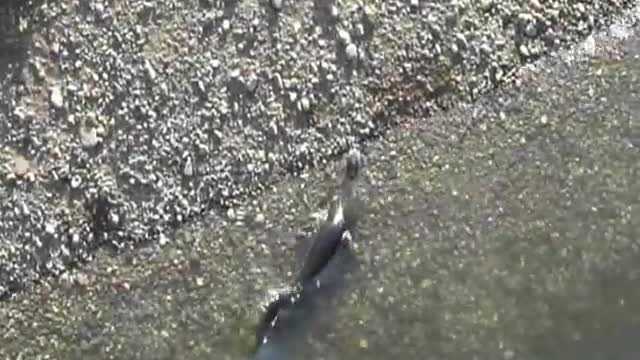Premium Only Content

Catfish grabs pigeon
Extant catfish species live inland or in coastal waters of every continent except Antarctica. Catfish have inhabited all continents at one time or another. Catfish are most diverse in tropical South America, Asia and Africa with one family native to North America and one family in Europe. More than half of all catfish species live in the Americas. They are the only ostariophysans that have entered freshwater habitats in Madagascar, Australia, and New Guinea.
They are found in freshwater environments, though most inhabit shallow, running water. Representatives of at least eight families are hypogean (live underground) with three families that are also troglobitic (inhabiting caves). One such species is Phreatobius cisternarum, known to live underground in phreatic habitats. Numerous species from the families Ariidae and Plotosidae, and a few species from among the Aspredinidae and Bagridae, are found in salt water.
Catfish may have up to four pairs of barbels: nasal, maxillary (on each side of mouth), and two pairs of chin barbels, even though pairs of barbels may be absent depending on the species. Catfish barbels always come as pairs. Many larger catfish also have chemoreceptors across their entire bodies, which means they "taste" anything they touch and "smell" any chemicals in the water.
Catfish have one of the greatest ranges in size within a single order of bony fish. Many catfish have a maximum length of under 12 cm.[5] Some of the smallest species of Aspredinidae and Trichomycteridae reach sexual maturity at only 1 centimetre (0.39 in).
The wels catfish, Silurus glanis, and the much smaller related Aristotle's catfish are the only catfish indigenous to Europe: the former ranging throughout Europe, and the latter restricted to Greece. Mythology and literature record wels catfish of astounding proportions, yet to be proven scientifically. The higher-level phylogeny of Siluriformes has gone through several recent changes, mainly due to molecular phylogenetic studies. While most studies, both morphological and molecular, agree that catfishes are arranged into three main lineages, the relationship among these lineages has been a contentious point in which morphological and molecular phylogenetic studies differ.
Pigeons are also bred for meat, generally called squab and harvested from young birds. Pigeons grow to a very large size in the nest before they are fledged and able to fly, and in this stage of their development (when they are called squabs) they are prized as food. For commercial meat production a breed of large white pigeon, named "King pigeon," has been developed by selective breeding. Breeds of pigeons developed for their meat are collectively known as utility pigeons.
-
 0:11
0:11
ifishidaho
3 years agoIdaho Catfish
5 -
 18:29
18:29
DeVory Darkins
14 hours ago $36.05 earnedZelenskyy KICKED OUT of the White House after shouting match erupts
113K204 -
 2:23:02
2:23:02
Badlands Media
1 day agoThe Liberty Den Ep. 133
120K62 -
 2:05:41
2:05:41
TimcastIRL
13 hours agoTrump SLAMS Ukraine President In TENSE WH Meeting, The War MAY END w/ Rob Smith | Timcast IRL
209K118 -
 10:31:05
10:31:05
Dr Disrespect
22 hours ago🔴LIVE - DR DISRESPECT - PGA TOUR 2K25 LAUNCH DAY
220K31 -
 2:30:04
2:30:04
Laura Loomer
13 hours agoEP105: MISSING: The Epstein Files
103K79 -
 1:46:14
1:46:14
Kim Iversen
14 hours agoTrump to Zelenskyy: 'You're Gambling with World War III'
110K157 -
 55:28
55:28
Glenn Greenwald
16 hours agoGlenn Reacts to Trump-Zelensky Exchange and Takes Q&A from our Members | SYSTEM UPDATE #415
166K264 -
 4:26:54
4:26:54
Nerdrotic
18 hours ago $47.24 earnedMarvel PANIC MODE! Kathleen Kennedy GONE?! Hollywood DEI Dead | Friday Night Tights 342 Nick Freitas
178K46 -
 1:30:03
1:30:03
Flyover Conservatives
1 day agoZelensky Fail... God Called IT!; From Prison to the White House: Angela Stanton King’s Unbelievable Redemption Story | FOC Show
81.7K6